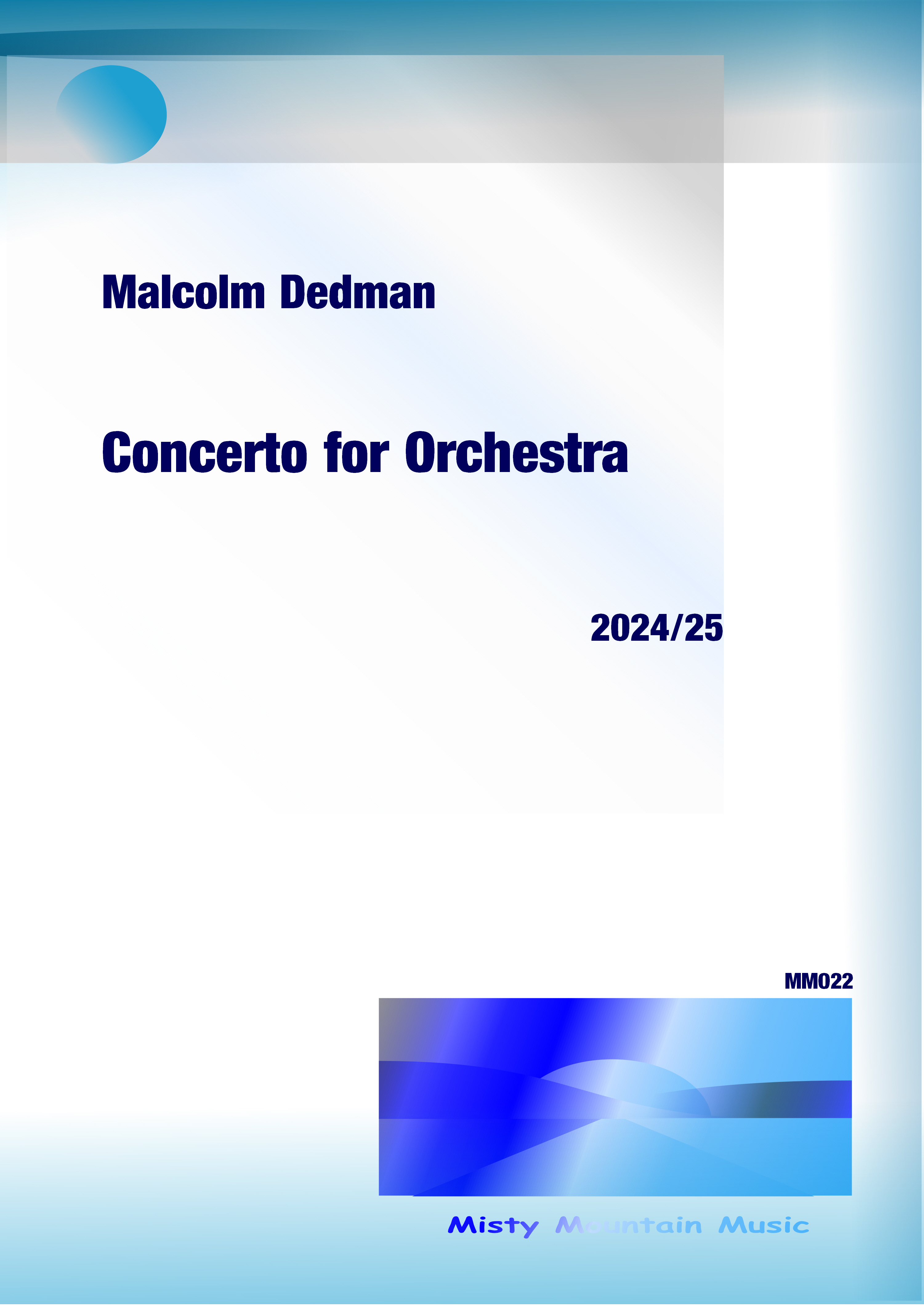
Browse Works
Instrumentation
Additional Information
Concerto for Orchestra was written in 2024-25 and is a major work for large orchestra, lasting nearly 29 minutes. The orchestra is made up of piccolo, 2 flutes, alto flute, 2 oboes, cor anglais, 2 clarinets in Bb, bass clarinet, alto saxophone, 3 bassoons (3rd doubling contrabassoon), 4 horns, 4 trumpets, 3 trombones, tuba, timpani, 4 percussion, harp, piano, celesta and strings.
I have deliberately avoided writing a symphony as so much has been written in this genre such that I don’t feel I can add anything. The Concerto for Orchestra genre is relatively new, with obvious examples from Bartók, Lutosławski and Tippett, although it has routes in the Baroque Concerti Grossi, including the six Brandenburg Concertos by JS Bach.
My Concerto is in 5 movements, as follows:
African Village, starts by treating the orchestra in groups, suggesting a Concerto Grosso. The first subject is an interplay between percussion with piano and brass, emphasising rhythm. The second subject is a counterpoint of woodwind with harp, celesta and some percussion. These two subjects are then developed with alternative orchestrations. The strings first appear in the coda section, as a major climax to this movement. The string choral phrases are alternated with percussion elements from the first subject and draw the movement to a quiet close.
Ritual is in two sections. The first uses string trills with crotales, celesta and muted brass with flutes forming the expression of a ritual. The second section introduces an ostinato figure on the strings, alternating with clarinets, then oboes with piccolo runs and trills. These two sections are then developed with different orchestration, with the first section leading to a climax into the second section.
Scherzo is in ABA form, the B section suggesting the traditional ‘trio’. Again the orchestra appears in groups and never tutti. The saxophone introduces a 7-note phrase which is developed by the woodwind with interruptions in the form of held notes from the strings. Tom-toms and temple blocks attempt to imitate the opening phrase with strings and piccolo. Marimba introduces the B section together with scales on piano and harp, along with pizzicato string accompaniment. A cascade of scales appears in the strings and woodwind at first ascending, then later descending. The recapitulation of section A initially uses the brass instead of woodwind, although the woodwind take over later as the music gets quieter. It ends with loud tom-toms and a short brass chord.
Inner Peace is the slow movement and is predominantly in 5/4 time. The music evolves from string chords and rising vibraphone solo. Woodwind take over the string chords after which a solo saxophone melody is stated along with celesta and bowed vibraphone. These elements are developed, with the saxophone reaching upwards, when the brass take over the initial chords. After further development, harp tremolos alternating with string tremolos are heard. This leads into the coda where the harp tremolos are combined with celesta, bowed crotales, Bell tree, triangle and three gongs, bringing the movement to an ethereal close.
Finale has a more complex structure and makes use of larger combinations. There are two main subjects: the first being in a complex time signature (8/8 divided into 3+3+2 eighth notes) and is for the wind and timpani, alternating marimba with bongos, congas and timbales; and the second using the same percussion but with strings and piano with some woodwind, this being in 3/4 time. The movement proceeds with statements from previous movements: firstly a development of the second movement, then a return of the first subject using different orchestrations. A harp glissando leads into a variant of part of the third movement. Brass fluttertongue leads the music into a development of the second subject, followed by a variant of the fourth movement. This leads directly into the coda section of the first movement where the strings are initially replaced by brass and alternating this time with a section from the first subject of this movement. Finally, the second subject is developed and builds up with more instruments being added, until the last few bars which is a climatic and joyful tutti ending.
